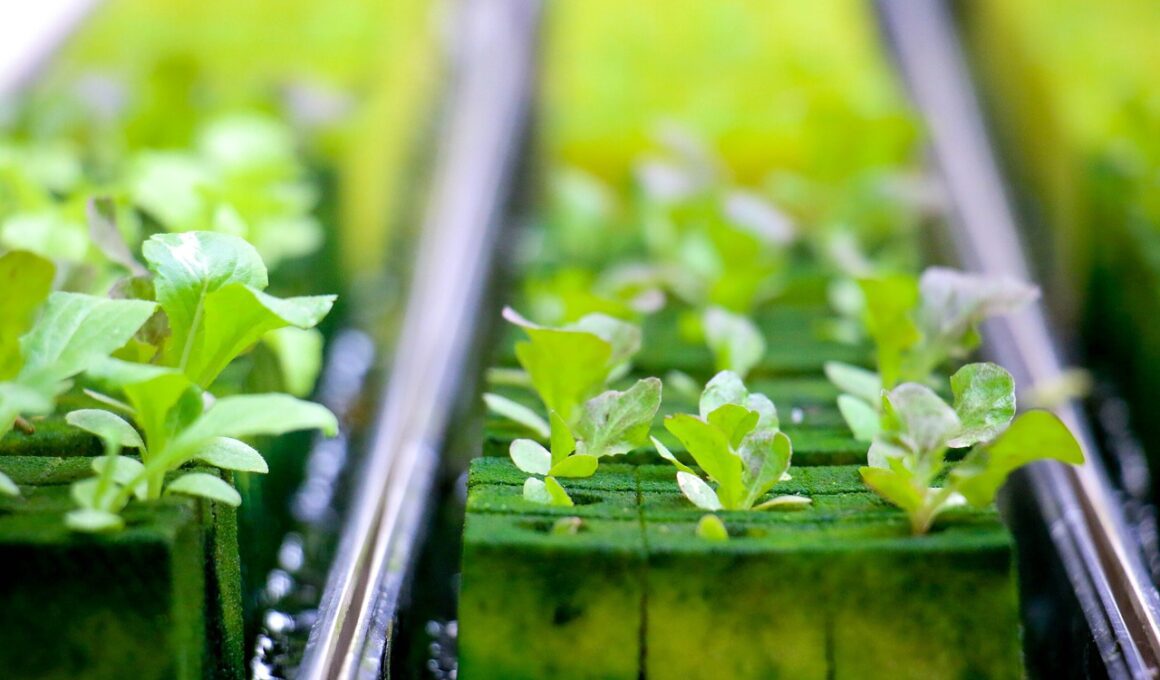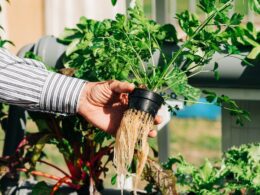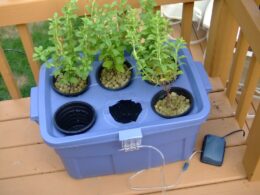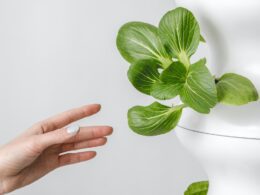Are you considering hydroponic growing but worried it might be too difficult? Don’t worry, hydroponic growing is not as hard as you think. In fact, it can be an easy and rewarding way to grow your own plants, even if you don’t have access to outdoor space or fertile soil.
Hydroponic growing is a method of growing plants without soil, using water and nutrient solutions instead. While it may sound complicated, it’s actually a simple and efficient way to grow plants, once you understand the basics.
With the right equipment and a little bit of know-how, you can easily set up your own hydroponic system and start growing healthy plants in no time. So, let’s dive into the world of hydroponic growing and explore how you can get started today.
The Benefits of Hydroponic Growing
You’ll be amazed at how effortless it can be to cultivate your own fresh produce with a hydroponic system, all while enjoying the benefits of healthier eating and a more sustainable lifestyle.
With hydroponics, you can grow your own fruits and vegetables without the need for soil, pesticides, or herbicides. This means you can enjoy nutritional advantages that come with eating fresh, pesticide-free produce.
Not only does hydroponic growing offer nutritional advantages, but it also has a positive environmental impact. In traditional farming, chemicals used to grow crops can damage soil and water. In contrast, hydroponic systems recycle water and nutrients, reducing water usage by up to 90%. Moreover, hydroponic systems require less land to grow the same amount of produce, making it more efficient and sustainable.
By growing your own fresh produce with a hydroponic system, you can make a positive impact on your health and the environment. You’ll be able to enjoy fresh, pesticide-free produce with greater nutritional value, all while reducing your carbon footprint.
So why not give hydroponic growing a try and see for yourself how easy and rewarding it can be?
The Basics of Hydroponic Growing
Learning the basics of hydroponic growing can be a game-changer for those who want to explore new ways of cultivating plants. While it may seem daunting at first, hydroponic growing is actually quite simple once you understand the basics. Here are some key things to keep in mind:
- Hydroponic growing relies on nutrient-rich solutions to sustain plant growth. These solutions contain all the necessary nutrients plants need to thrive, and they’re carefully balanced to ensure optimal growth.
- When it comes to hydroponic growing, not all plants are created equal. Some plants are better suited to hydroponic systems than others, so it’s important to choose the right plants for your setup. Some of the most popular hydroponic plants include lettuce, spinach, herbs, and tomatoes.
One of the biggest advantages of hydroponic growing is that it allows you to grow plants with minimal space and resources. With hydroponic growing, you don’t need soil, which means you can grow plants indoors or in small spaces. Additionally, hydroponic growing uses less water than traditional soil-based growing, making it a more sustainable option.
Incorporating hydroponic growing into your gardening routine may seem intimidating at first, but with a bit of practice and patience, it can be a fun and rewarding way to cultivate plants. By following the basic principles of hydroponic growing, you can create a thriving garden that’s both sustainable and efficient. So why not give it a try? With a little bit of effort, you’ll be amazed at the results you can achieve.
The Equipment You Need
Now that we’ve covered the basics, let’s talk about the gear you’ll need to take your indoor gardening to the next level.
First up, you’ll need a hydroponic system. Depending on your budget and available space, you can choose from a variety of systems like Deep Water Culture, Nutrient Film Technique, and Aeroponics. Each system has its pros and cons, so make sure to do your research before making a purchase.
In addition to the hydroponic system, you’ll need lighting, ventilation, and a pH meter. Cost considerations come into play when choosing these items, as they can quickly add up.
When it comes to lighting, LED lights are the most energy-efficient and cost-effective option. As for ventilation, a simple fan can do the trick, but if you want to control temperature and humidity, you’ll need a more advanced ventilation system. Lastly, a pH meter is crucial for maintaining the proper pH level in your nutrient solution. Make sure to invest in a reliable one to avoid any issues down the line.
While hydroponic growing is a more sustainable option than traditional agriculture, it’s important to consider the environmental impact of your equipment. Look for equipment made from sustainable materials, and choose energy-efficient options whenever possible. Additionally, consider the lifespan of your equipment and whether it can be recycled or repurposed after use.
By making conscious choices, you can minimize your impact on the environment while enjoying the benefits of hydroponic growing.
Is Hydroponic Gardening Difficult for Beginners?
Hydroponic gardening difficulty level varies for beginners. While it may seem daunting, with proper guidance and resources, it becomes manageable. Learning about suitable systems, nutrient requirements, and plant care can help newcomers navigate the challenges. With practice and patience, anyone can thrive in hydroponic gardening.
Tips for Successful Hydroponic Growing
If you’re looking to take your indoor gardening to the next level, these tips will help you achieve successful and sustainable results.
One of the most important things to keep in mind when growing hydroponically is pH management. You need to make sure your pH levels are in the correct range for the plants you’re growing. Most plants prefer a pH range of 5.5 to 6.5, but this can vary depending on the type of plant.
Another important aspect of hydroponic growing is nutrient solutions. You need to make sure your plants are getting the right nutrients they need to grow and thrive. This means using a high-quality nutrient solution that contains all the necessary macronutrients and micronutrients. It’s important to follow the manufacturer’s instructions when mixing and using these solutions, as too much or too little can harm your plants.
Overall, hydroponic growing can be a challenging but rewarding experience. By keeping pH levels in check and using the right nutrient solutions, you can grow healthy plants that produce high yields.
With a little patience and practice, you can become a successful hydroponic gardener and enjoy the benefits of fresh, homegrown produce.
Overcoming Common Challenges
Don’t let common challenges discourage you, there are simple solutions to overcome them and achieve successful results.
One of the most common challenges in hydroponic growing is pest management. Pests can quickly destroy your plants and ruin all your hard work. To overcome this challenge, you can use organic pest control methods such as introducing beneficial insects like ladybugs or using neem oil.
Another challenge that hydroponic growers often face is nutrient balancing. It can be tricky to find the right balance of nutrients for your plants to thrive. To overcome this challenge, you can invest in a high-quality nutrient solution and use a pH meter to ensure the pH level of your nutrient solution is optimal for your plants. You can also monitor your plants regularly and adjust your nutrient solution accordingly.
Lastly, another common challenge in hydroponic growing is maintaining the correct temperature and humidity levels. This is especially important in indoor growing environments. To overcome this challenge, you can use a thermometer and humidity gauge to monitor your growing environment and make necessary adjustments. You can also invest in a good ventilation system to keep the air circulating and prevent mold and mildew growth.
By understanding and overcoming these common challenges, hydroponic growing can be a rewarding and successful experience. Remember to stay vigilant with pest management, nutrient balancing, and environmental control to ensure your plants reach their full potential. With a little bit of effort and patience, you can achieve great results in your hydroponic garden.
Frequently Asked Questions
How much maintenance is required for hydroponic growing?
Maximizing yields and minimizing effort are key when it comes to low maintenance hydroponic growing. There are a few tips to keep in mind when setting up a hydroponic system to ensure that it requires minimal maintenance.
Firstly, choose plants that are easy to grow and don’t require a lot of attention. Secondly, invest in a high-quality hydroponic system that is easy to use and maintain. The benefits of a DIY hydroponic system are that it can be customized to your needs and is often more cost-effective than pre-made systems. However, the drawback is that it requires more effort and knowledge to set up and maintain.
With the right approach and attention to detail, hydroponic growing can be a low maintenance and rewarding experience.
Can any type of plant be grown using hydroponics?
You might be surprised to learn that almost any type of plant can be grown using hydroponics! There are numerous benefits of using hydroponics, including faster growth rates, higher yields, and more efficient water usage.
However, there are also some common misconceptions about hydroponic growing, such as the belief that it’s difficult or expensive to set up. In reality, hydroponics can be quite simple and affordable with the right equipment and knowledge.
So don’t be intimidated – give hydroponic growing a try and experience the rewards for yourself!
Is it necessary to use special nutrients for hydroponic plants?
When it comes to hydroponic growing, using organic nutrients in hydroponic systems is a great way to promote plant growth without relying on special chemical nutrients. These organic nutrients can provide numerous benefits, such as avoiding the risk of chemical contamination and producing healthier, more nutritious plants.
However, it’s important to note that not all plants require special nutrients in hydroponic systems. In fact, many plants can thrive just as well without them, making hydroponic growing a simple and effective way to cultivate a wide variety of crops.
So whether you’re an experienced gardener or just starting out, hydroponic growing can be a safe and easy way to grow your own plants.
What is the cost difference between traditional soil growing and hydroponic growing?
If you’re wondering about the cost difference between traditional soil growing and hydroponic growing, there are a few factors to consider.
Comparing yields, hydroponic systems have shown to produce more crops per area than traditional soil growing. This means that you can potentially earn a higher return on investment (ROI) with hydroponics, as you can grow more crops in less space.
However, the initial investment for a hydroponic system can be higher than traditional soil growing, as you need to purchase equipment and special nutrients.
Ultimately, the cost difference between the two methods will depend on the specific setup you choose. But it’s worth considering the potential long-term benefits of hydroponic growing.
How do you dispose of the water and nutrients in a hydroponic system?
When it comes to hydroponic growing, one of the crucial aspects is water and nutrient disposal methods. There are a few ways you can do this, but the most common method is to drain the nutrient solution and water into a container and dispose of it properly.
You can also use a recycling system to filter and reuse the water and nutrients. However, it’s important to note that improper disposal can have a negative impact on the environment. Make sure to follow local regulations and guidelines when disposing of wastewater and nutrient solutions.
By being mindful of the impact you have on the environment, you can enjoy the many benefits of hydroponic growing without harming the planet.
Conclusion
So, is hydroponic growing hard? The truth is, it can be challenging at times, but with the right knowledge and equipment, it can also be very rewarding.
In conclusion, hydroponic growing offers numerous benefits such as faster growth, higher yields, and the ability to grow plants in small spaces. It requires a basic understanding of the fundamentals, including the equipment needed, nutrient solutions, and environmental factors.
With careful attention to detail and some trial and error, anyone can successfully grow plants hydroponically. Don’t be afraid to experiment and ask for advice from experienced growers. Happy growing!









